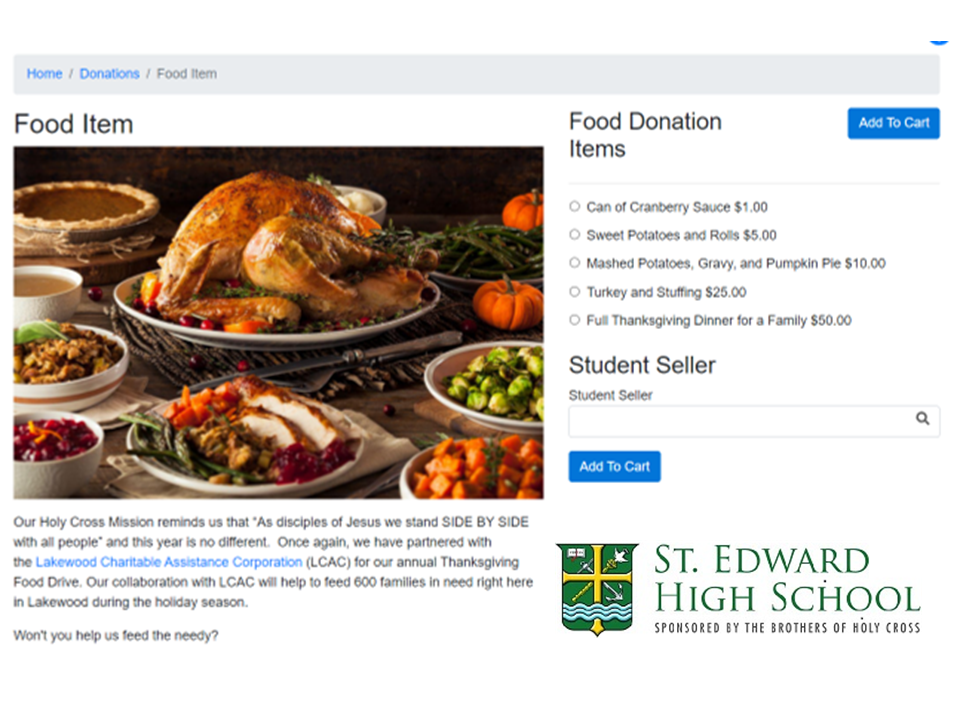You’ve made it!
OK, maybe not all the way just yet, but you’ve (hopefully) cleared the highest of the hurdles that 2021 has thrown at you. You are approaching a brand new year full of opportunity and — with any luck — much more normalcy than either of its two predecessors have offered. However, as most nonprofit folks know, the third quarter of the calendar year is the most critical giving season — especially December, where nearly one-third of the entire year’s giving occurs. Consequently, it should come as no surprise that November is the most popular month for making year-end asks. That may mean a lot of competitive clutter for your donor audience….but as they say, fish when the fish are biting!
Fortunately, you have a massive library of best practices from which to mine when considering your year-end ask — including one tradition that, although less than 10 years old, has grown exponentially in popularity.

THE GIVING TUESDAY MOVEMENT
Giving Tuesday (alternatively known as the National Day of Giving) got its start in 2012 as a largely grassroots fundraising effort. With a huge online footprint — and coinciding with the rise of social media platforms — Giving Tuesday has grown from $28M in U.S. online and offline donations in 2013 nearly one hundred-fold to $2.7B in 2020. GT has been blessed with partnerships from many major corporations (including the Ford Motor Company, Google, Microsoft, Cisco, Sony and PayPal), foundations (The Bill & Melinda Gates Foundation and The Hewlett Foundation) and charitable organizations (including Save The Children, Craig Newmark Philanthropies, Fidelity Charitable and Emerson Collective). With this groundswell of worldwide organic momentum, Giving Tuesday is a good opportunity to jump on the bandwagon to raise funds and attract supporters — all while celebrating the community of philanthropic giving.
DANCE WITH THE DATE THAT BROUGHT YOU
Giving Tuesday wouldn’t be anywhere near where it is today without the support of social media — so don’t neglect using it as a tool in your year-end giving arsenal. If your organization has a Facebook presence, leverage it in your GT campaign; the social media platform has been involved in the movement since 2016, and moved $120M in 2019. And if your org integrates with PayPal, use that as well; they have been involved with Giving Tuesday since 2016, and in 2019 moved $106M through its portal. These are some powerful allies to have in your Giving Tuesday campaign.
Some year-end appeal messaging ideas:
- Thanksgiving theme of gratitude for what you have….and helping those who don’t
- Holiday theme, drawing on the traditions of family, togetherness, gift-giving, etc.
- A nostalgic dynamic with a ‘Look Back at 2021’
- If it’s geographically advantageous, capitalize on popular sports teams (pro/college football or basketball, bowl games, etc.) or local destinations or attractions. Check to be sure you don’t violate any trademarks in your efforts on this one.

SEGMENT YOUR AUDIENCE BASE….AND TAILOR YOUR COMMUNICATION ACCORDINGLY
Before you execute your year-end appeal, carefully segment your donor list by (a few ideas here:)
- Donors or Prospects
- Gift amount (major – midrange – minor)
- One-time or Recurring donors
- Historical engagement (<1 Year, 2-4 Years, 4+ Years, etc.)
- Frequency/number of donations per year
- Method of donation (Online by portal, Offline, Designation, Legacy, etc.)
- Type of support (time, talent, treasure)
Once you’ve properly segmented your appeal list, your next step is adapting the conversation with each segment. Start by compiling a profile for each group — demographics, psychographics, what issues do they care about, what do they want to see your cause accomplish? Put yourself in your donors’ shoes and go through the entire engagement process, front to back: all messaging, your website’s content and functionality, marketing messaging, email phrasing, sales collateral, stewardship communications, social media platforms, and all your calls to action. Make sure it all makes logical sense from their point of view, and leverage the things that link your donors to what you’re doing. And always be consistent from your mission to your story, to your year-long messaging, to your year-end appeal. Make sure the theme and aesthetic of these things all align.
Finally, you’re ready to PERSONALIZE your appeal. A note — perhaps recalling a memorable meeting, meal, event or moment shared, or a specific instance about their contribution to your cause….inquiring about/well-wishing a spouse or child (if appropriate)….or a comment on a shared loyalty to a favorite team, group or other interest — lets prospective donors know that you value them not only as supporters, but as people.
HELPFUL HINT: In addition to putting on your ‘donor’ hat to see things from their perspective, identify your most trusted donors, members of your Board of Directors, etc. Ask them to immerse themselves in the prospect-to-donor experience from start to finish, and take notes on their feedback. Furthermore, see if they may be willing to act as ambassadors to assist in converting your prospects to donors.

ALWAYS KEEP THE IMPACT OF YOUR WORK FRONT AND CENTER
GET CREATIVE WITH WAYS YOU’LL ACCEPT SUPPORT
- Publicly-traded securities (stocks, bonds, mutual funds), which allows the donor to claim the fair market value at the time of the gift as an itemized deduction on their Federal income tax return….yet with appreciation over time can mean more money for the cause.
- Converting Traditional IRA assets to Roth IRAs, which have more flexible tax-free withdrawal rules, and making it a contribution. Furthermore, donors aged 72+ can make a Qualified Charitable Distribution (QCD) from their IRA without any tax consequences….and could satisfy a Required Minimum Distribution mandate at the same time.
- Complex and non-liquid assets (private company/restricted stock, real estate or other long-term appreciated property, alternative investments or cryptocurrency like Bitcoin) often have a relatively low cost basis. However, be aware that donating non-publicly traded assets to charity can sometimes involve additional laws and regulations.
Keep in mind that some tax-savvy donors may choose to ‘bunch’ their gifts by concentrating them into a single year (and possibly skipping 1-2 subsequent years) to get their itemized deductions above the current standard deduction level.

If you’d like to discuss your plans for a year-end appeal and how Giving Tuesday can play a role, please reach out to us!